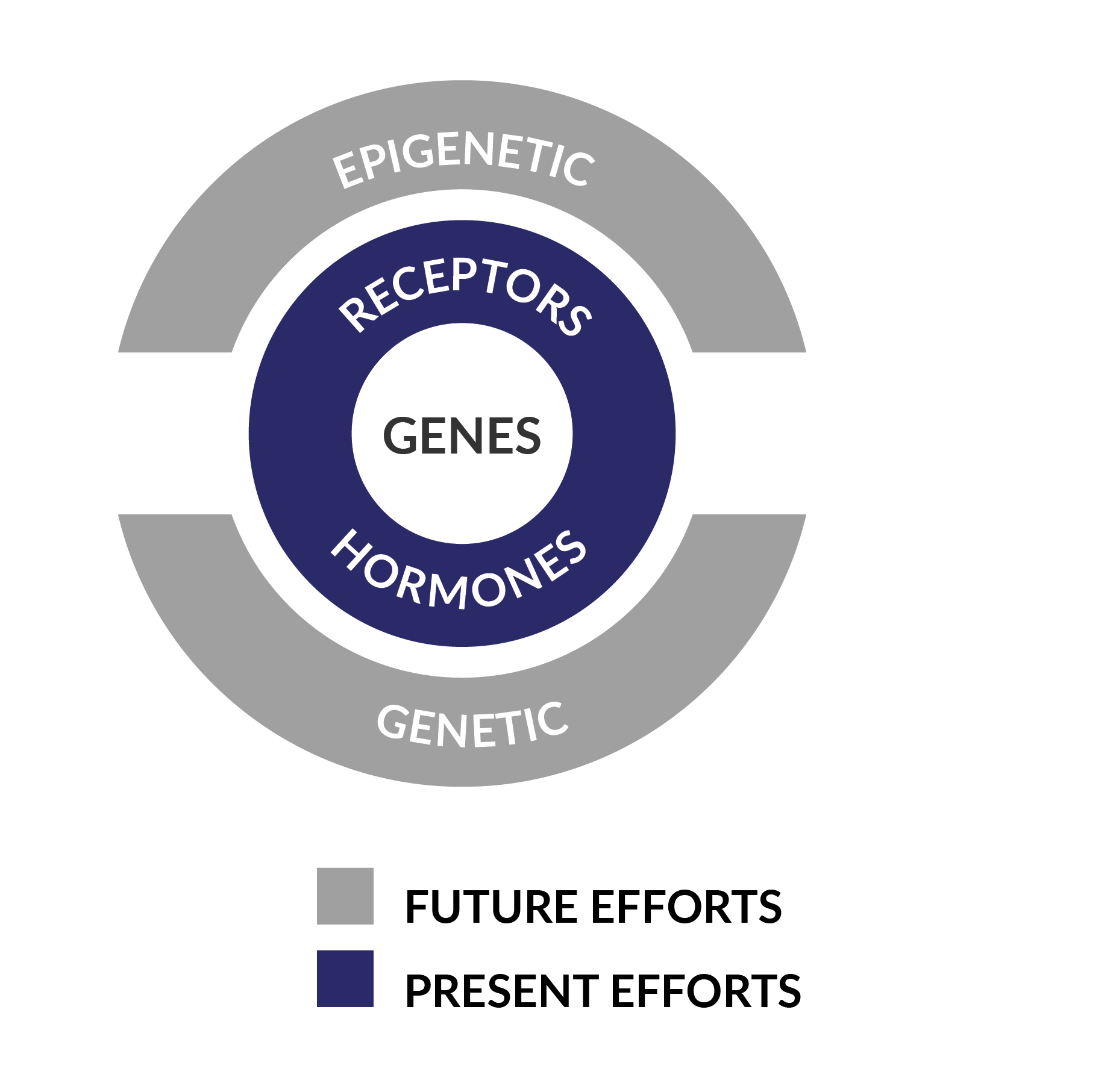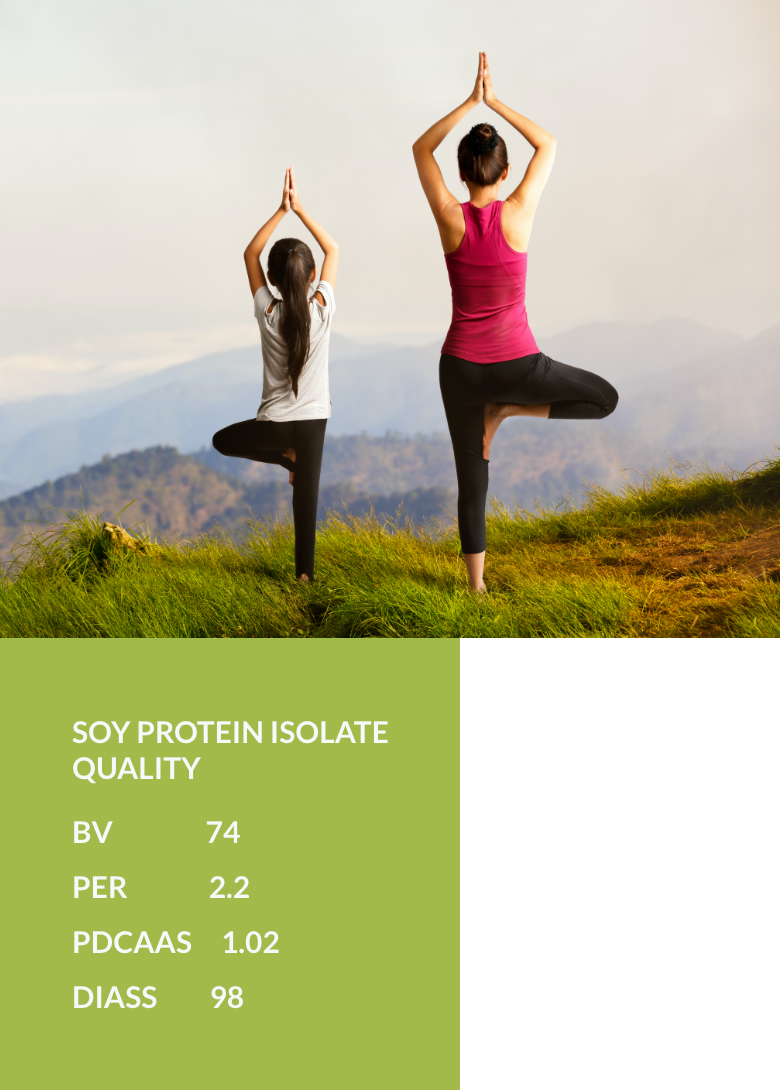Health & Nutrition
SOY PROTEIN, A COMPLETE PROTEIN
Soy protein contains all essential amino acids and is therefore considered a complete protein. Generally, protein nutrition and related health outcomes are dependent adequate protein nutritional quality on short as well as long term.

Protein is made up of 20 different amino acids, building blocks used by the body to generate various tissues, as muscles, as well as hormones and other life essential functions in metabolism, repair and signalling mechanisms. The body can create certain amino acids through the diet by breaking down proteins. However, the ten amino acids known as essential amino acids cannot be synthesised and must be obtained via dietary proteins.
There are several critical functions carried out by essential amino acids and deficiency in any of these amino acids can lead to various health issues and physical difficulties.
Protein Quality Related Heath Outcomes
PHYSIOLOGICAL/METABOLIC RESPONSES
• Absorption-digestibility• Metabolic utilization
• Nitrogen balance
• Lean mass/muscle/bone
• Tissue turnover
• Secretory Proteins
• Host defences/immunity
• Growth & maturation
• Tissue repair

SHORT-TERM OUTCOMES
• Growth and tissue repair (wasting and stunning)• Immune function and host defence system (prevalence and severity of infection
• Muscle and skeletal mass (capacity for physical work and athletic performance)
• Mental performance, mood, sleep patterns
• Detoxication of chemical agents and anti-oxidant system
LONG-TERM OUTCOMES
• Life course events, linear growth, menarche, aging• Age-related functional losses, muscle, bone strength, immunity, cognitive decline
• Nutrition related chronic diseases, CVDs, cancer, hypertension, oxidative damage, repair systems.
Nutritional Quality
The quality of dietary proteins is typically defined by the extent to which the constituent amino acids match the amino-acid needs of the consumer. Soy protein is considered one of the most nutritious plant proteins and numerous studies has confirmed its nutritional quality as measure by diverse approved methodologies.
Biological value measures protein quality by calculating the nitrogen used for tissue formation divided by the nitrogen absorbed from food. This product is multiplied by 100 and expressed as a percentage of nitrogen utilized. The biological value provides a measurement of how efficient the body utilizes protein consumed in the diet.
In Canada, the PER of foods is required to determine a protein rating for a given food. The PER method is a bioassay that measures the body weight gain of rats over 28 days as a function of their protein intake, with the test article reflecting the sole source of dietary protein. In Canada, foods qualify for “good source” and “excellent source” protein claims if their protein ratings are ≥20 and ≥40. However, this method is by some considered to be underestimating protein needs for humans.
Protein Digestibility Corrected Amino Acid Score (PDCAAS) have for years been used for evaluating protein nutritional quality for humans. In calculating PDCAAS, the limiting amino acid score is multiplied by protein digestibility, with the intention of assessing how well dietary protein can match the demand for amino acids and allowing the prediction of dietary protein utilisatio`n.
A recent protein quality measure (digestible indispensable amino acid score; DIAAS) is recommended to replace PDCAAS. DIAAS considers the bioavailability of the individual essential amino acids and may over time be recognized as a more relevant measure of protein quality for human nutrition.
Traditionally protein digestibility studies have been performed on rodents, whereas a recent experiment on pigs, having a digestion more comparable to humans, has confirmed that soy proteins also by this method is ranking high amongst dietary protein ingredients. According to the FAO recommended AA patterns for older children, adolescents and adults and recommendations for nutrient claims, Soy Protein Isolate, and soy flour both qualify as ‘good’ sources of protein, with a score ≥75 and <100.0. Irrespective of methods, soy protein ingredients rank amongst the most nutritional valuable plant proteins for human nutrition.

The quality of dietary proteins is typically defined by the extent to which the constituent amino acids match the amino-acid needs of the consumer. Soy protein is considered one of the most nutritious plant proteins and numerous studies has confirmed its nutritional quality as measure by diverse approved methodologies.
Biological value measures protein quality by calculating the nitrogen used for tissue formation divided by the nitrogen absorbed from food. This product is multiplied by 100 and expressed as a percentage of nitrogen utilized. The biological value provides a measurement of how efficient the body utilizes protein consumed in the diet.
In Canada, the PER of foods is required to determine a protein rating for a given food. The PER method is a bioassay that measures the body weight gain of rats over 28 days as a function of their protein intake, with the test article reflecting the sole source of dietary protein. In Canada, foods qualify for “good source” and “excellent source” protein claims if their protein ratings are ≥20 and ≥40. However, this method is by some considered to be underestimating protein needs for humans. Protein Digestibility Corrected Amino Acid Score (PDCAAS) have for years been used for evaluating protein nutritional quality for humans. In calculating PDCAAS, the limiting amino acid score is multiplied by protein digestibility, with the intention of assessing how well dietary protein can match the demand for amino acids and allowing the prediction of dietary protein utilisation. A recent protein quality measure (digestible indispensable amino acid score; DIAAS) is recommended to replace PDCAAS. DIAAS considers the bioavailability of the individual essential amino acids and may over time be recognized as a more relevant measure of protein quality for human nutrition.
Traditionally protein digestibility studies have been performed on rodents, whereas a recent experiment on pigs, having a digestion more comparable to humans, has confirmed that soy proteins also by this method is ranking high amongst dietary protein ingredients. According to the FAO recommended AA patterns for older children, adolescents and adults and recommendations for nutrient claims, Soy Protein Isolate, and soy flour both qualify as ‘good’ sources of protein, with a score ≥75 and <100.0. Irrespective of methods, soy protein ingredients rank amongst the most nutritional valuable plant proteins for human nutrition.
Specific Health Benefits
Soy protein’s quality makes it a very attractive alternative for those seeking non-animal sources of protein in their diet. Soy is a complete protein with a high concentration of BCAA’s, particularly useful for muscle tissue homeostasis
VEGAN LIFESTYLE
One of the main health reasons for considering a vegan lifestyle is to reduce promotion of inflammatory disease due to high saturated fat levels accompanying dairy and meat as compared to plant-based protein products, which typically are accompanied by fibres. The inflammatory system related diseases are many such as diabetes, arthritis, cardiovascular diseases. Furthermore, there are numerous other reasons for going vegan, such as religion, animal welfare, and ecological footprint. Additionally, it appears that animal-based proteins contain higher level of sulphur-based amino acids, which when metabolized can lead to increased acid secretion. If the kidneys are unable to buffer the acid levels, calcium from bone may be released to restore balance and resulting in reduction in bone mass density and increase risk of fracture.CARDIOVASCULAR
In October 1999, the US Food and Drug Administration (FDA) approved labeling for foods containing soy protein as protective against coronary heart disease. The FDA based this decision on clinical studies showing that at least 25 g of soy protein per day lowered total and LDL cholesterol. The FDA requires for the claim that a serving contain at least 6.25 g of soy protein, 25% of the necessary daily amount (25 g), with the expectation that foods containing soy protein would be eaten at least 4 times per day. The FDA also stated that “the evidence did not support a significant role for soy isoflavones in cholesterol-lowering effects of soy protein.” This effect is considered attributed to phytosterols in soy protein ingredients-
REDUCE RISK OF DIABETES
For centuries, soy has been part of a human diet. Epidemiologists were most likely the first to recognize soy’s benefits to overall health when considering populations with a high intake of soy. A recent study concluded that consumption of legumes, soybeans, was inversely associated with the risk type 2 Diabetes Mellitus
ENOPAUSE AND BONE HEALTH
The health benefits associated with soy protein are related to the physiologically active components that are part of soy, such as protease inhibitors, phytosterols, saponins, and isoflavones. These are considered beneficial for cardiovascular health, but also the higher isoflavone-containing product protected against spinal bone loss. Soy protein has been found to positively influence bone and calcium balance in post-menopausal women specifically not on Hormone Replacement Therapy.
INFANTS WITH SPECIAL NEEDS
Some infants are born with deficiency of the enzyme lactase, which is responsible for degradation of the milk carbohydrate lactose and may benefit from the use of soy-based formulas.
Soy-based formula is also often recommended to infants who are recovering from episodes of diarrhoea to facilitate their recovery. Poor tolerance to lactose from dairy products may cause these symptoms as stomach cramps, excess gas, and diarrhoea. Parents, who are vegan and wish to put their new-born on a vegan diet may also choose to use a soy-based formula, which are formulated to provide the necessary micronutrients nutrients normally found in dairy based baby-milks.
